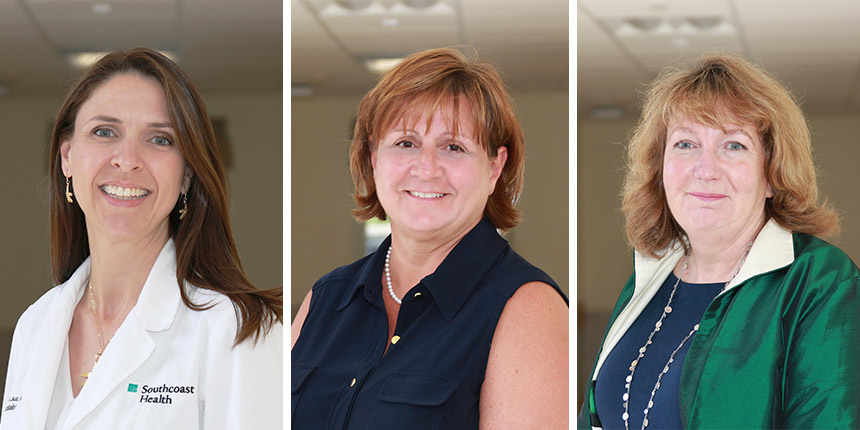Health+
A Dramatically Better Hospital Stay

Southcoast’s Hospitalist Program marks 10 years of innovation
In 2007, Southcoast Health started its Hospitalist Program, pioneering the implementation of a new model of care that has dramatically changed the way patients and families experience a hospital stay.
Ten years later, Charlton Memorial, St. Luke’s and Tobey hospitals are staffed by more than 60 hospitalists who are board certified in Internal Medicine or Family Practice. Hospitalists are physicians who specialize in caring for patients while they are in the hospital. And the use of hospitalists has gone from rare and sometimes controversial, to an accepted best-practice at larger hospitals across the country, according to Kelly Roderick, executive director of Southcoast’s Medicine Care Center.
Each day, Southcoast hospitalists provide medical care to patients across the Southcoast campuses. That care is 24 hours a day, seven days a week, which means patients and families have a chance to talk with doctors about their care throughout the day and week.
“When families come to the hospital, I try to communicate with them on a daily basis,” says Ana Laus, MD, a Southcoast hospitalist for the last six years. “They can page me and I’m there. And for some who live far away — a daughter in Florida or a son in New Hampshire — I can call them with updates on their mother on a daily basis and keep them in touch.”
When Southcoast began its Hospitalist Program, there were approximately 1,000 hospitalists nationwide. Now, that number is approaching 44,000, according to the Society of Hospital Medicine.
“Initially, we didn’t know if the concept would work,” Roderick says. “Fortunately, we had primary care physicians in our community who were early adopters and willing to partner with us. They found it increasingly challenging to come to the hospital every morning, then go to their office to see a full schedule of patients.”
Some patients still have never heard of a hospitalist, says Patricia Mangan-Ball, patient-hospitalist ambassador at Southcoast.
“They remember the old days when the doctor arrived early in the morning to visit on rounds, then returned to his or her office,” she says. “We explain that now with the Hospitalist Program the doctor is there all day, that they don’t leave and they’re always available.”
Technological developments — especially the adoption of the Epic electronic medical records system — have allowed hospitalists and primary care physicians to stay in constant contact about the conditions, treatments and prescriptions for patients.
“The continuous in-house coverage our team provides, coupled with the technology to keep physicians in the community informed, has made a significant difference in the level of service we provide,” Roderick says. “It is patient-focused care, which ultimately improves both the patient experience and clinical outcomes.”
Visit Southcoast’s Hospitalists Program to learn more.
